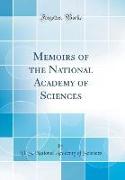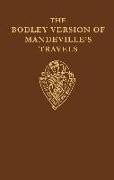Memoirs of the National Academy of Sciences (Classic Reprint)
BücherAngebote / Angebote:
Excerpt from Memoirs of the National Academy of SciencesWe will now describe in detail Palmocaris types, restoring it so far as possible in our description from the Specimens received from Messrs. Lacoe and Carr, amounting in all to about a dozen, of which ten were kindly loaned by Mr. Lacoc. Dr. Kingsley has also obligingly drawn a restoration of the fossil from the specimens sent him for the purpose. There are. No traces of a carapace, but the head is plainly distinct from the rest of the body. It is rounded in front, with no traces in my specimens of a rostrum, and is apparently composed of two segments. The body, seen sidewise, is suddenly arched or bent at the articulation of the thoracic and abdominal regions, as in stoma pods and shrimps, and of the usual proportions. All the segments behind the head are free, and are fourteen (seven of which are abdominal) in number, counting the telson as one. There are thus sixteen segments, the head composed of two, the thorax of seven, and the abdomen of seven. The body thus has apparently the same number of thoracic and abdominal segments as in the existing Stomapoda. It is probable that the head of Palaocaris is composed of the same number of segments as in the Schizopoda, but as the mouth parts have not been preserved, this point must remain undetermined. The thorax, in its general shape, as seen from above, is of the normal shape, as seen in existing Stomapoda. The abdomen is much narrower than the thorax, with the basal segments short, and the penultimate one longer than broad, widening out a little on the hind margin and excavated behind to receive the base of the telson.The first antennte are about one-half as long as the body, with the scape long and slender, three-jointed (unless what I regard as the basal joint consists, as appearances suggest, of two), first joint long and slender, second, as thick but only one-halfas long as the first, third, moder ately long, considerably longer than the second, ¿agella nearly equal in size, long and slender.About the PublisherForgotten Books publishes hundreds of thousands of rare and classic books. Find more at www.forgottenbooks.comThis book is a reproduction of an important historical work. Forgotten Books uses state-of-the-art technology to digitally reconstruct the work, preserving the original format whilst repairing imperfections present in the aged copy. In rare cases, an imperfection in the original, such as a blemish or missing page, may be replicated in our edition. We do, however, repair the vast majority of imperfections successfully, any imperfections that remain are intentionally left to preserve the state of such historical works.
Folgt in ca. 10 Arbeitstagen




